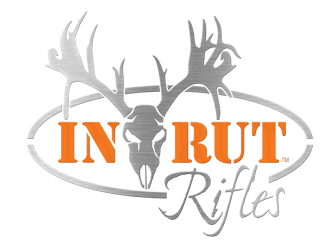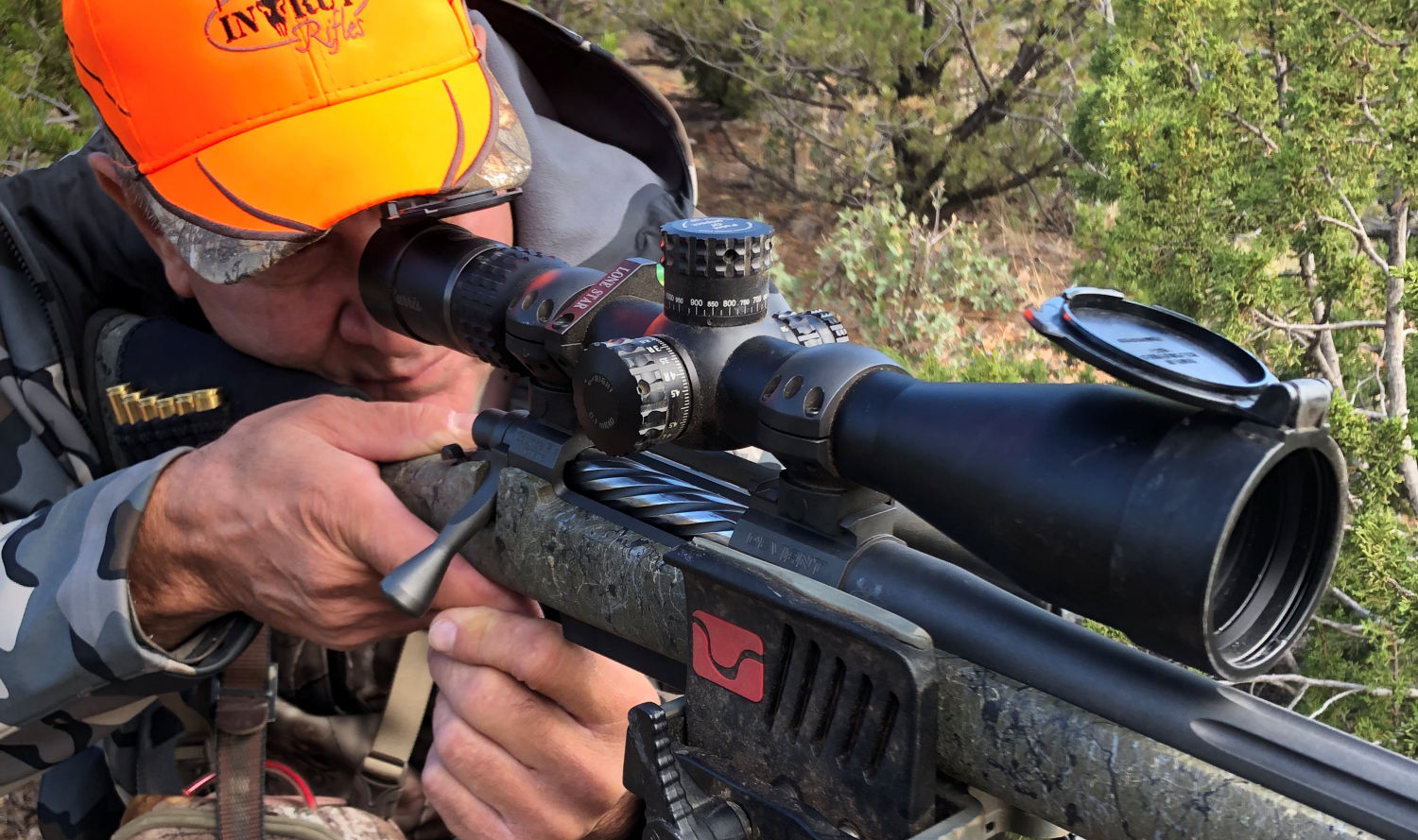Long-Range Rifle Hunting vs Long-Range Bow Hunting: Is it ethical?
The argument as to whether long-range hunting is real sporting is a timeless debate. For starters. What is the definition of a long-range shot? Is it 500 yards? 800 yards? What is considered long-range bow hunting? The answer is different depending on who you ask, and that hunters skill set.
Personal perspectives on long-range
Everyone’s perspective on what long-range means and whether or not it’s ethical varies depending on who you’re talking too. For me, 500 yards is a hell of a shot with a rifle. And, anyone who can consistently hit a 10 ring at 100 yards with a bow has my attention.
That said, when it comes to big game hunting, I am a die-hard archery hunter who manages just one 3-day rifle hunt in Texas a year. (Things have changed since I now live in Western Colorado)
Mark, the owner of IN-RUT, has a bit different perspective as to what “long-range hunting” means to him. As an avid hunter and long-range shooter Mark’s perspective, along with fellow long-range shooters have no issues taking an animal effectively and ethically at ranges up to 800 yards.
Why? It’s simple really, they’ve been doing it for 30+ years. They have spent more rounds in a year maybe even months than what most people do in a lifetime. Practice, consistency, discipline, confidence, lots of time and the right equipment make these shots possible.
But it’s still 800 yards?
I’ll admit when I first got into the big game hunting scene, I hunted with a bow only and didn’t take my first rifle deer until 5 years later. I never cared to rifle hunt in my younger years as I was one of those “Bow hunt or die”, rifle hunting sucks kind of guys. Naïve I know. But, with age, I realized, what’s the difference between a bow hunter shooting an elk or a mule deer at 100+ yards and a guy shooting a high-powered rifle from 700 yards away?
Ballistics don’t lie.
For our bullet vs arrow ballistics comparison, we are going to use Field & Streams 100-yard arrow ballistic results and ballistics from a 28 Nosler shooting a 160 Grain AccuBond bullet.
Archery Equipment: Bowtech RPM 360 at 70lbs, with a Carbon Express Maxima Red finished hunting arrow weighing 417 grains. A little lighter for elk (But doable), but more than enough for mule deer.
Rifle Equipment: IN-RUT Full Curl in 28 Nosler shooting a 160 Grain AccuBond bullet. Perfect for all North American Big Game.
- 28 Nosler
- Yards
- Drop (Inches)
- Kinetic Energy
- Velocity
- Time To Impact
- 28 Nosler
- 800 Yards
- -84.1 Inches
- 1371 ft/lbs
- 1964 fps
- .583 Seconds
- Carbon Express Arrow
- 90 Yards
- -102.95 Inches
- 67.2 ft/lbs
- 323 fps (Launch Speed)
- 1.027 Seconds
There’s a big difference in numbers.
Colorado Parks & Wildlife “recommends” a minimum of 1000 ft/lbs of energy to take down an elk. So, theoretically, archers with a relatively similar set up to the one above is only at 1/10th (94 ft/lbs) of Colorado’s recommended ft/lbs to take down an elk at 10 YARDS!
According to the ballistics above, a rifle, even at 800 yards is going to be more lethal (Assuming it’s a vital shot) than a bow ever will be. So, who’s unethical now?
Who determines what is considered ethical long-range hunting?
This is up to you. While states have specific regulations on certain types of ammo and minimum requirements, there aren’t any requirements on the range. How far you determine is ethical comes down to your own personal preference and hunting skillset.
With my skill set, 400 yards with a rifle is pushing it when it comes to harvesting an animal. With a bow, I am comfortable up to 60 yards on a deer and 80 on an elk. Those are my comfort levels and what I am confident at, and I know for a fact that my ethical range is different than the next guys. This will also change in time the more that I practice and more effective I get.
It’s up to you to determine what’s ethical and isn’t.
What’s makes long-range hunting ethical?
Practice makes perfect.
Practice makes perfect right? Wrong, but it sure does help. Hunters who practice monthly, weekly and even daily have no issues shooting an elk or mule deer at 800 yards and sometimes it seems they can do it with their eyes closed because it’s second nature.
The more time spent at the range the better you will get at long-range shooting and the tighter your groups will get at further distances.
Confidence is key.
This should be the number one contributing factor as to whether a hunter will make that 700+ yard shot or release that arrow at over 100 yards, but it’s not. Without practice, you won’t have the confidence needed to make the shot.
With all the factors that go into the next second of the hunt after you release that arrow or fire that bullet, confidence is key. Practicing real-life scenarios is a great way to prepare and make sure that when the time comes your true to your aim and you make a clean and ethical shot.
Use your knowledge
Knowing how to manage the wind and other elements is a key factor in long-range hunting, especially the farther out you range. Not understanding how wind and weather can affect bullet or arrow flight is ignorance and can ultimately cause the wounding and waste of precious meat.
What makes long-range hunting unethical?
Time To Target
The further out you get the longer it takes for your bullet or arrow to hit it’s target. A perfect example would be a deer jumping or “ducking the string”. Anyone who’s bow hunted long enough has probably had this happen, and it happens all the time in under 40 yards.
Now, double the distance and time, factor in the weather conditions and on paper an 80-yard shot would be UNETHICAL in some people’s minds. But, take a hunter who shoots daily, practices in hunting situations and knows how to time a shot and this shot can become an Ethical one. A lot can happen in a short period of time.
Locating Your Game
One issue you can run into at further distances is losing sight of your game after the shot. Some long-range hunters can easily mistake a bad shot for a missed shot at 700 yards. The longer distance, adrenaline, and vibrations from the shooting will make it harder to see whether you had a solid hit or miss.
Make It Ethical: Having a spotter when shooting at greater distances will make for a more ethical shot. With the second set of eyes focusing on nothing but the animal, the hunter can focus on the shot and not so much about what happens after or where that animal goes.
Spotters can also focus 100% on where that animal was standing during the shot making it easier to find the start of the blood trail.
Draw your own ethical conclusion.
At the end of the day, whether a shot is ethical or unethical is up to you. Everyone’s opinion will be different and there will always be someone to argue with you about how that 700+ yard shot you took on that elk was unethical even though he dropped where he stood.
The bottom line is, animals are animals. They aren’t targets and any true hunter will be sickened at the thought of losing or wasting meat because they made an unethical or rushed shot. Sadly, it happens all the time and to say that most hunters haven’t made at least one unethical shot in their lifetime would be a lie. Accidents happen. . .
There is no real answer to the age-old question, and if you’re a long-range hunter who can make those long shots, more power to you. You also probably come home with a lot more meat than I do.
Practice, discipline, knowledge, and confidence will help improve your long-range hunting distance year by year. What’s ethical or not ultimately comes down to what your limits are and how confident you are at them.
~ Adam H.
Contributor


